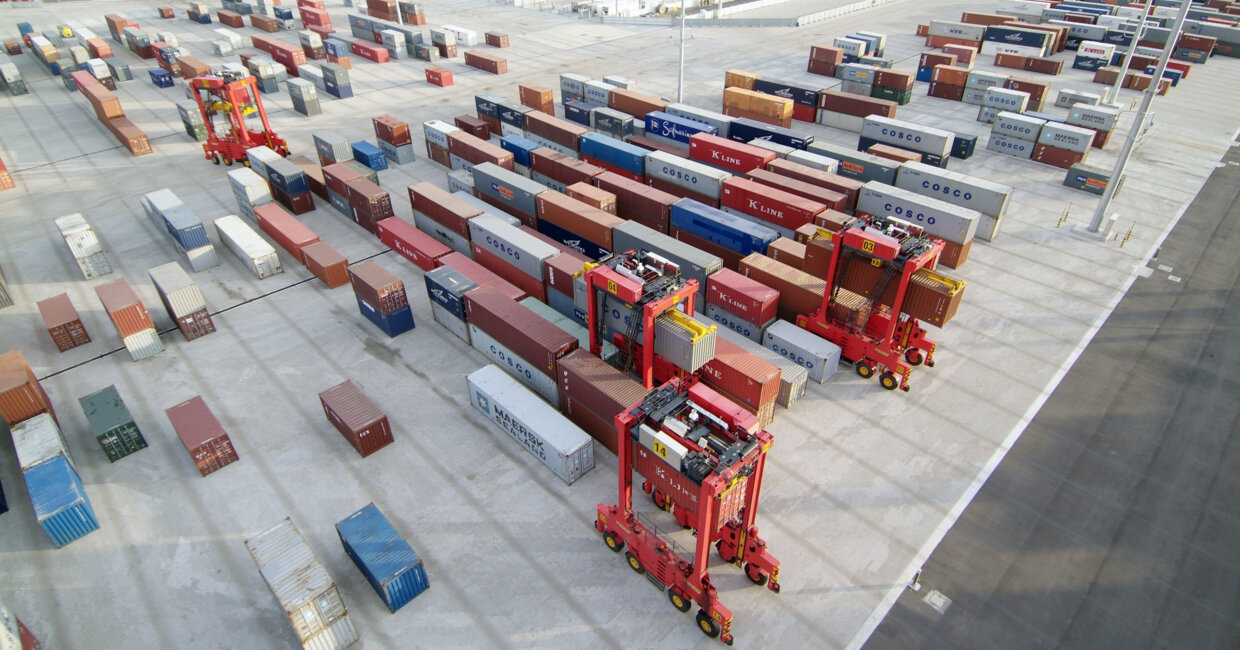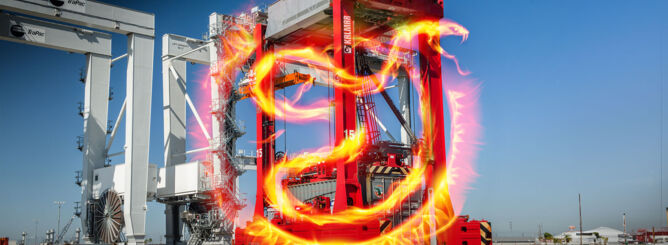How to design a terminal – the right way
Container terminal design is a complex process that requires extensive planning and careful risk management. Early decisions made during the design phase have huge implications later on, so a structured evaluation of various scenarios is essential for project success. For the best results, terminal design needs to leverage technology and data to the maximum, including the use of simulations, modelling and detailed business case analysis.
Today's container terminals operate in a highly competitive global business environment. Heavy consolidation between shipping lines has led to a continuous increase in average ship capacity at terminals of all sizes. Simultaneously, terminal operators face intense cost pressures while having to meet ever more demanding eco-efficiency targets.
As global logistics chains become faster, more transparent and more intensely competitive, the key challenge for terminals becomes one of doing things better by leveraging new technology. However, operators need to reconcile the need for major investments that will shape their operations for many decades to come with shorter-term uncertainty on market dynamics, global traffic patterns and their business environment.
Avoiding the common design pitfalls
To design a successful container or general cargo terminal is thus a highly challenging task that must decrease the cost of operation, improve service quality and effectiveness, and keep the terminal competitive for a wide range of potential future scenarios.
"Often, when designing a terminal – and especially when considering automation – operators can have difficulties in thinking through the full implementation plan," says Timo Alho, Vice President, Terminal Design Services, Kalmar. "It's easy to take shortcuts and make assumptions such as assuming the productivity figures of an ASC block based on data from another location, without taking into account local conditions and the terminal's own specific traffic profile."
Ultimately, operators face two main challenges when seeking to design successful terminals. Firstly, the required decisions are extremely complex and involve multiple interlinked variables, so they can only be handled with a structured approach and purpose-built tools. Secondly, each business case is extremely dependent on the individual conditions of the terminal. Generalised guidelines (e.g. how many cranes are needed for a container block of a given size) are of limited value, and designers must do the evaluation based on the specific situation and business goals of their own terminal.
At the core of a successful terminal design project is a structured design approach that leverages technology and data for the best results. The tools and processes for making more informed design decisions already exist, and a small investment in the design stage can be orders of magnitude more economical than having to make changes later on in the process.
Shaping the decision-making process
In large-scale terminal design projects, the standard way of working typically involves a limited depth of preliminary evaluation as well as an early focus on a single concept. "A better approach is a structured phase-by-phase method that leverages in-depth analysis and data-driven tools to provide additional time for evaluation before committing to the final concept," Timo Alho says. "This does not mean carrying out small-scale pilot projects, but acquiring more information and improving decisions while still retaining the flexibility to adapt."
A proven, successful approach to structuring the terminal design process flow is to divide it into three major phases. At each stage, designs and business cases are evaluated iteratively, retracing back to earlier steps as needed.
First, the Investigate phase examines a wide range of potential design solutions while taking into account the terminal's business environment goals, preferred investment strategy, and physical site footprint. The implementation phase is considered on a general level, but no single terminal design concept is locked down yet. Next, the Qualify phase includes more detailed operational validation and business case analysis on a variety of options. Finally, the Demonstrate phase ensures and validates that the selected design meets its objectives by utilising tools such as 3D modelling and terminal simulations based on real-world data.

Design well now, save money later
"In any terminal design project, it is crucial to remember that focusing on the planning phase will actually save money later on," says Timo Alho. "By using a structured approach and specialised software tools to support decision-making, multiple scenarios can be evaluated faster and in more detail. This enables options to be kept open longer, thus improving the quality of decisions as additional information becomes available."
The key elements of a well-planned and successfully executed terminal design process can be summarised as follows:
- Don’t save on the design phase. Time and money invested in the design phase will be paid back later in the project, at which point correcting early mistakes will cost significantly more.
- Get really involved in the design process. Take responsibility for the future of your terminal.
- Use the technology and data available to the fullest. Adopt and internalise their use in your organisation.
- Plan for the widest range of futures you can imagine, not just one scenario.
- Trust the partners that have done it before. Remember that your suppliers also want your project to become a successful, world-class reference.
- Focus on the whole lifecycle of the system, not just on the go-live date.
This article is a summary of the Kalmar and RebelGroup white paper Designing future-proof container terminals.
![]()
Learn more about our Terminal Design Services.




